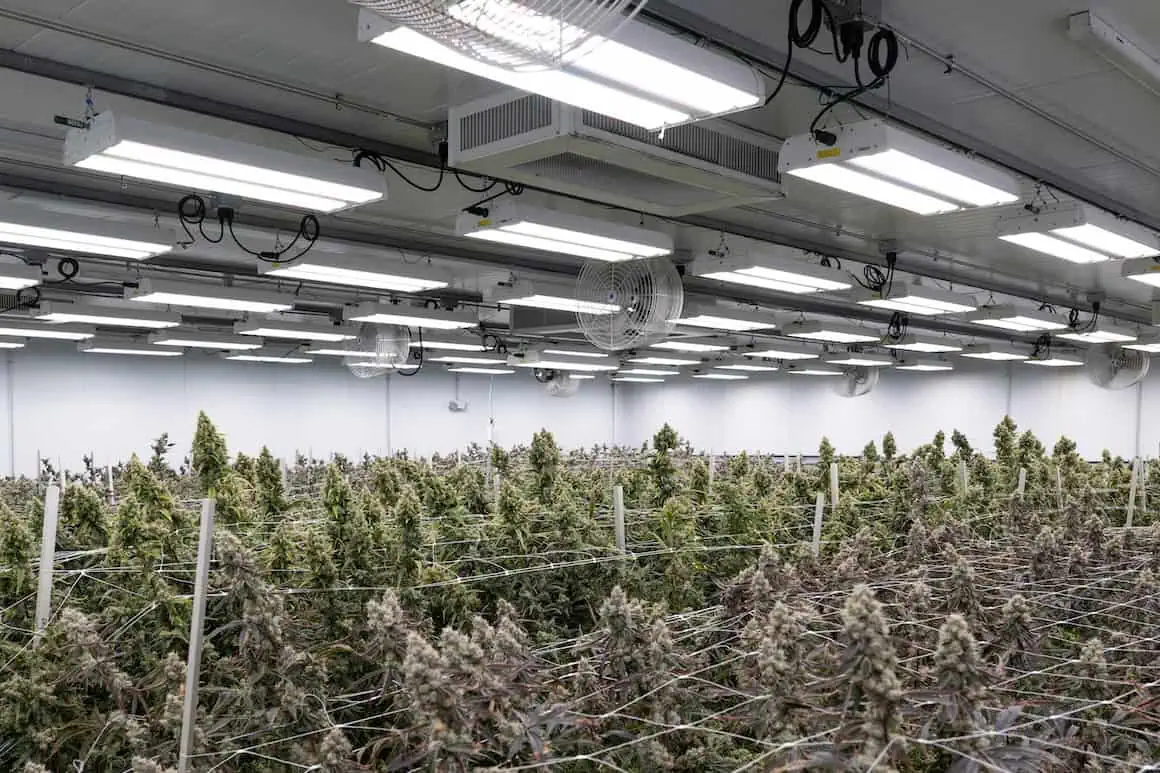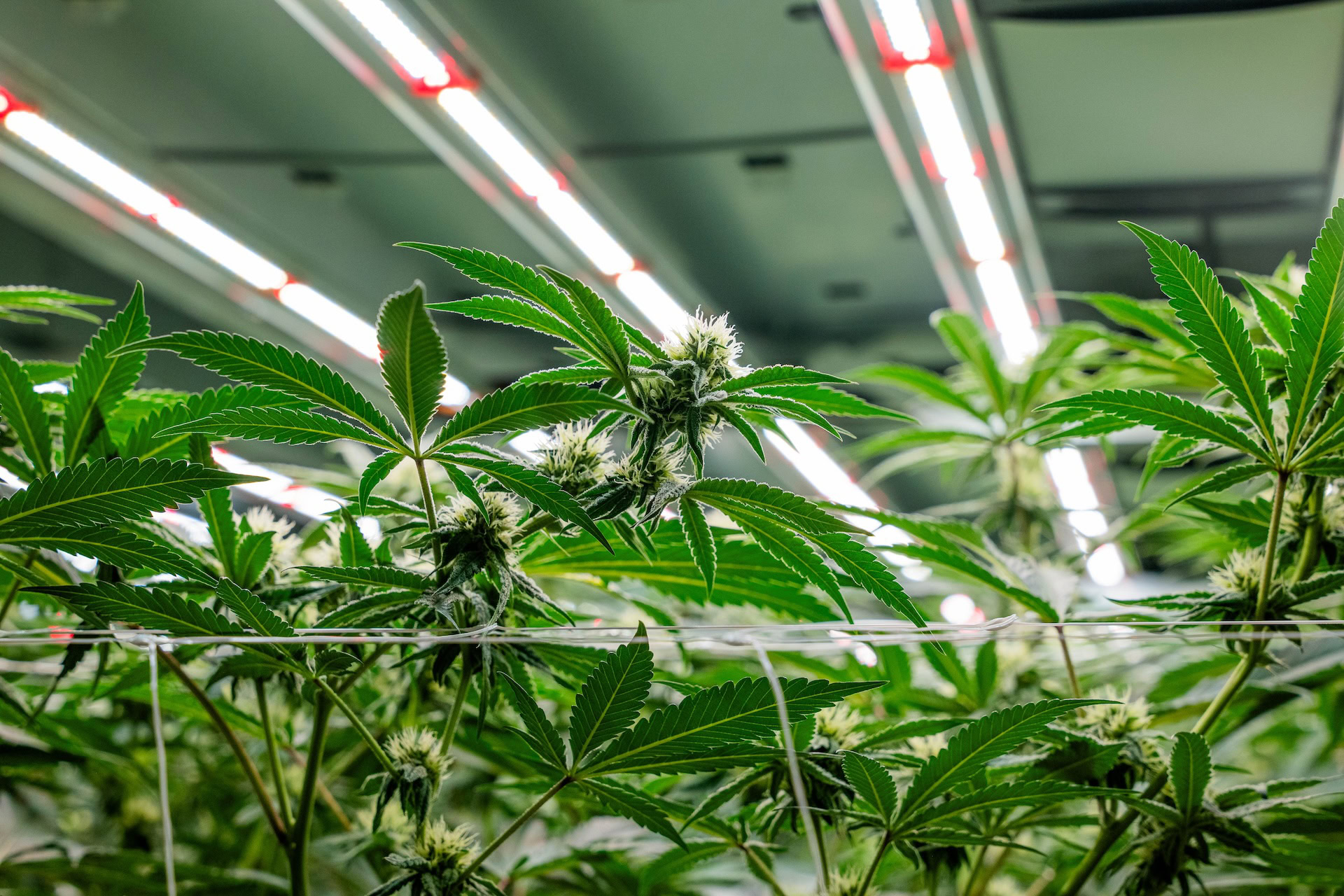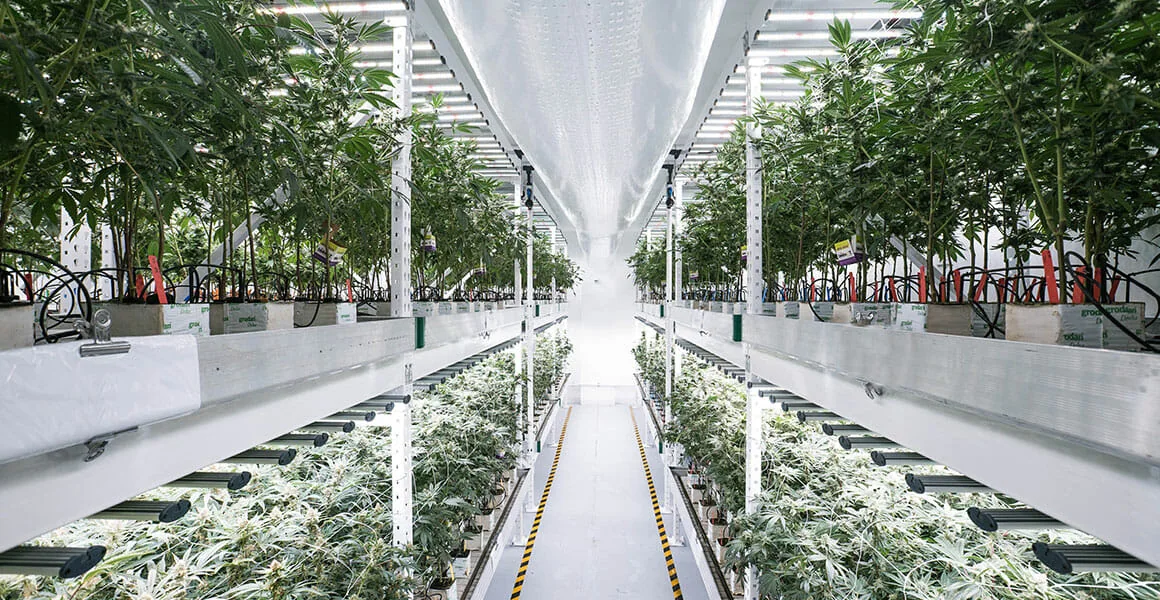Ramping Up Indoors
- Posted on
- by Fluence Bioengineering
Table of Contents
It may seem obvious, but most flora–especially cannabis plants–absolutely love light. In nature, plants must compete with each other for limited sunlight, space, and resources, but the tremendous advantages of indoor, controlled growing environments allow growers to control both the duration and intensity of LED lighting systems, among many other vital set points. Most importantly, LEDs can push the limits of PPFD to achieve the greatest potential for indoor crops.
Past and recent studies have shown just how much plants love quality light. According to research, a 1% increase in photosynthetically active radiation (PAR) corresponds to a 1% increase in harvestable product up to light levels of 1,500+ μmol/m2/s. In other words, with proper environmental controls and optimized procedures, a grower can generally increase crop yield by 15% in the same grow space simply by increasing light levels. This information is valuable for the future of agriculture because LEDs promise substantial growth without significant increases in other operating expenses.
A key factor to understand and consider when growing crops is daily light integral (DLI), which is the total amount of light that plants receive during the photoperiod, as measured in moles per photon per day. As you increase your PPFD, the DLI serves as a cumulative metric for how much light your plants are receiving in total per day. The DLI changes throughout the production cycle, varying from 20 mol/m2/day in early vegetation to 45 mol/m2/day or more during flowering.
The ability to vary and control light levels and durations with LEDs has completely revolutionized indoor growing by both replicating and optimizing a crop’s environmental preferences. For instance, in nature, young plants and budding vegetation often cannot tolerate the full impact and duration of direct sunlight, which can lead to photobleaching and other harms. For this reason, young wild plants are most successful when they are semi-shielded from direct sunlight by other plants and structures in their surrounding environment. As they grow taller, they perform a natural process of photo-acclimation (gaining tolerance to increasing light levels).
Fluence engineers have developed a patented photo-acclimation process using advanced LED systems and solutions in order to replicate and optimize this natural and necessary light ramping throughout the grow cycle. By this, Fluence researchers have discovered and designed a way to reach the highest PPFD as quickly and safely as possible, allowing growers to maximize both crop yield and quality. When done safely, more light equals more revenue.
Best of all, growers can increase light levels and yield without substantial changes to their existing facilities, and LEDs can be matched to existing PPF for energy savings or matched to the existing electrical input for increased PPF.
To read more about PPFD, DLI, and indoor growing, you can check out our comprehensive Indoor Retrofitting Guide here. And if you would like to ramp up your facilities with advanced LEDs, please contact us so a Fluence expert can assist you throughout the entire process.


